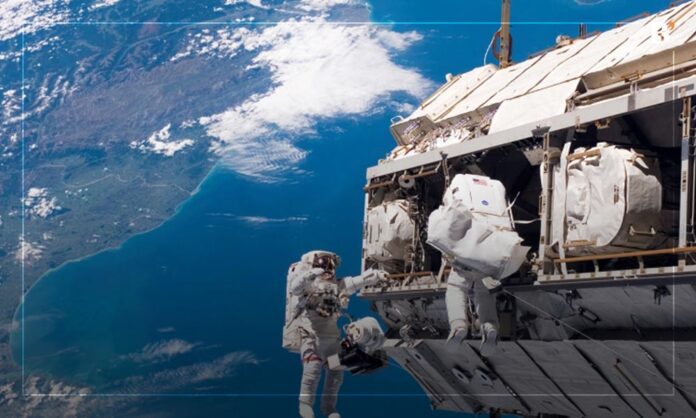Key Highlights
- Expedition 69 astronauts conducted experiments on weightlessness effects on the human body and explored liquid-based carbon dioxide removal for space-based and Earth-bound applications.
- The third spacewalk of the year was completed with the installation of a radiator on the Nauka science module by two astronauts with assistance from a third using the European robotic arm.
On April 19th, the International Space Station (ISS) was busy as four Expedition 69 astronauts conducted various scientific experiments and prepared for an upcoming spacewalk.
Weightlessness Experiments and Fluid Physics Study Conducted by Expedition 69 Astronauts
The day started with NASA astronauts Stephen Bowen and Woody Hoburg studying the effects of weightlessness on the eyes and brains of astronauts. The lack of gravity in space causes blood and cerebrospinal fluid to shift toward the head, resulting in ocular and cranial pressure.
To mitigate these effects:
- The astronauts collected their blood pressure measurements and scanned their chests with the Ultrasound 2 device for the ISAFE investigation.
Aim of The Study
The study aims to explore the long-term effects of weightlessness on human health and to develop ways to mitigate these effects.
After completing their initial research, Bowen used the Confocal Microscope to test its operations using fluorescence imaging techniques. At the same time, Hoburg and UAE Flight Engineer Sultan Alneyadi set up hardware for the CapiSorb Visible Systems fluid physics study.
This experiment aims to determine the potential of using a liquid-based carbon dioxide removal system to promote the following:
- More efficient space-based solutions
- Advanced Earth-bound applications
Spacewalk Completed With Radiator Installed On Nauka Science Module By Expedition 69 Astronauts
In the afternoon, the four astronauts reviewed procedures and practiced robotic maneuvers for an upcoming spacewalk on April 28th.
Bowen and Alneyadi will be conducting the spacewalk to upgrade the power generation system of the ISS, spending approximately six-and-a-half hours in the vacuum of space. Space station managers will discuss the upcoming spacewalk live on NASA TV’s app and the agency’s website on Monday, April 24th, at 2 p.m. EDT.
Meanwhile, overnight, Commander Sergey Prokopyev and Flight Engineer Dmitri Petelin completed the third spacewalk of the year, which lasted for seven hours and 55 minutes. The duo installed a radiator on the Nauka science module with Roscosmos Flight Engineer Andrey Fedyaev, who operated the European robotic arm (ERA) with the radiator in its grip.
The three Roscosmos astronauts will have a long sleep period before returning to their regular shift on Thursday, spending the day cleaning their Orlan spacesuits and stowing their spacewalking tools in the Poisk module. Fedyaev will return the ERA to its stowage position on Nauka and then power it down.




